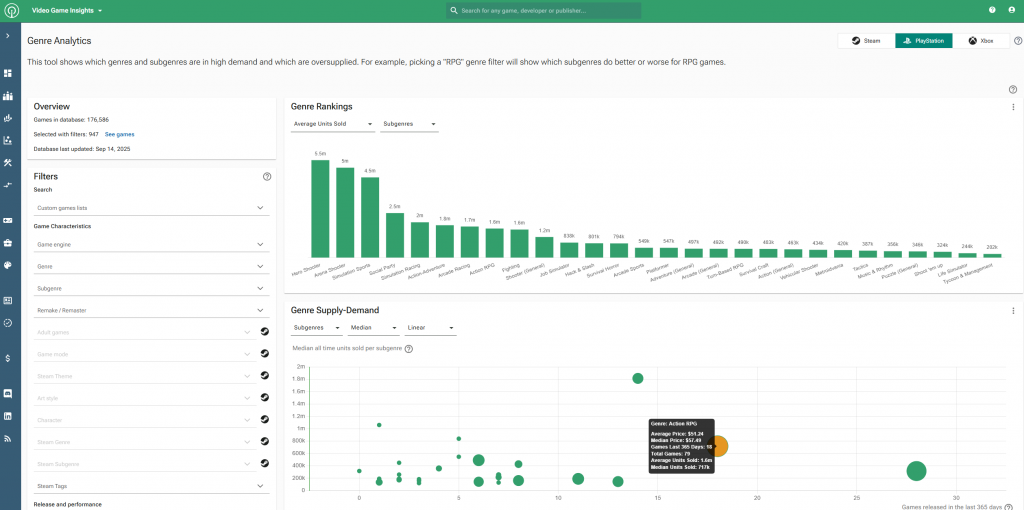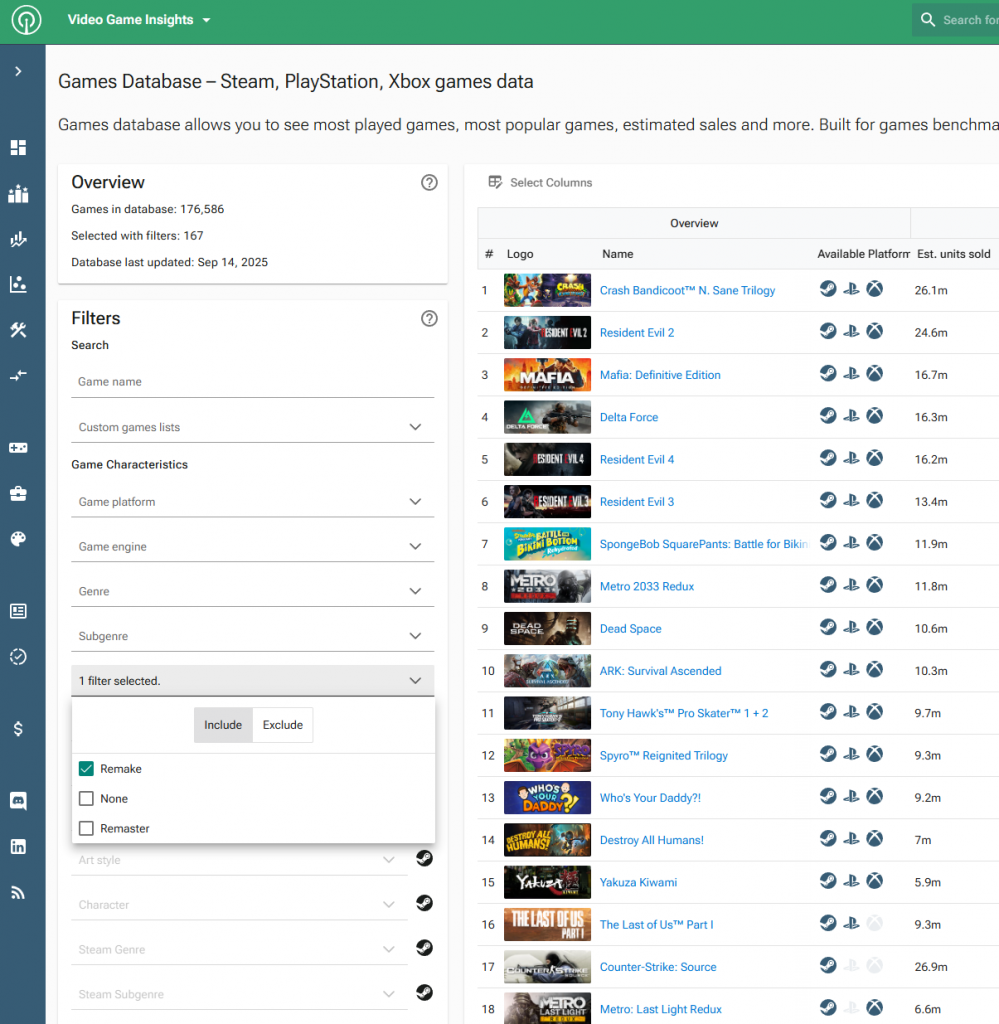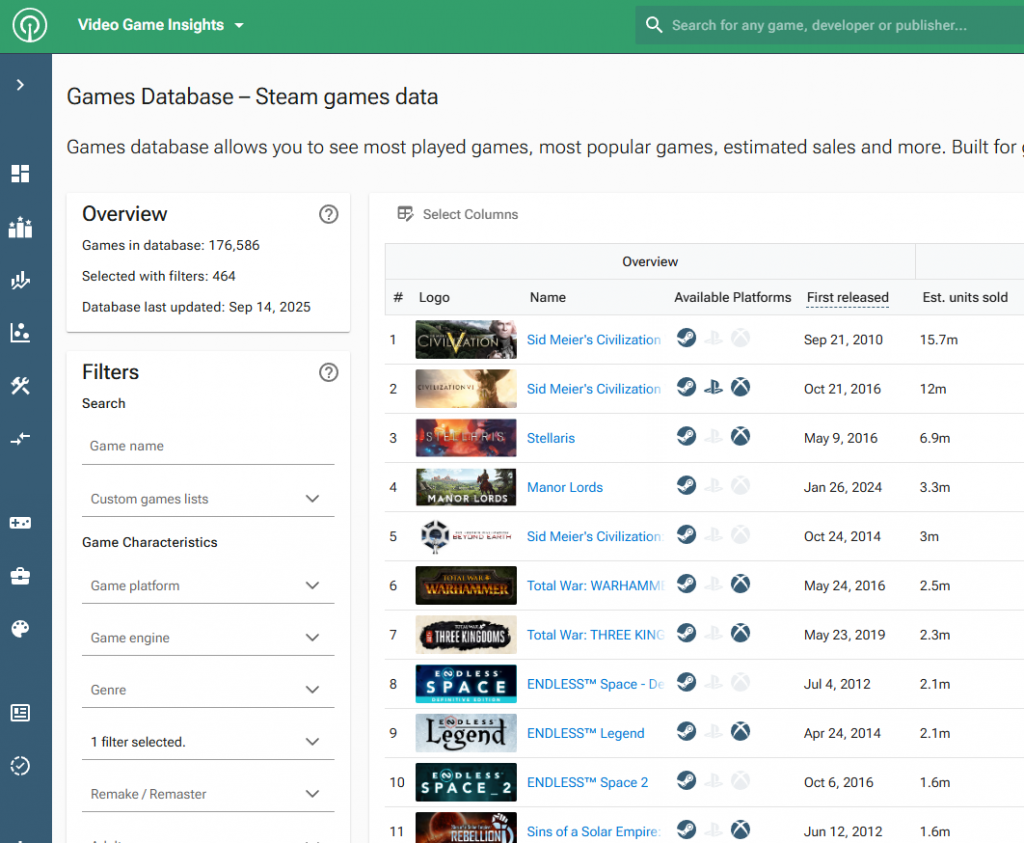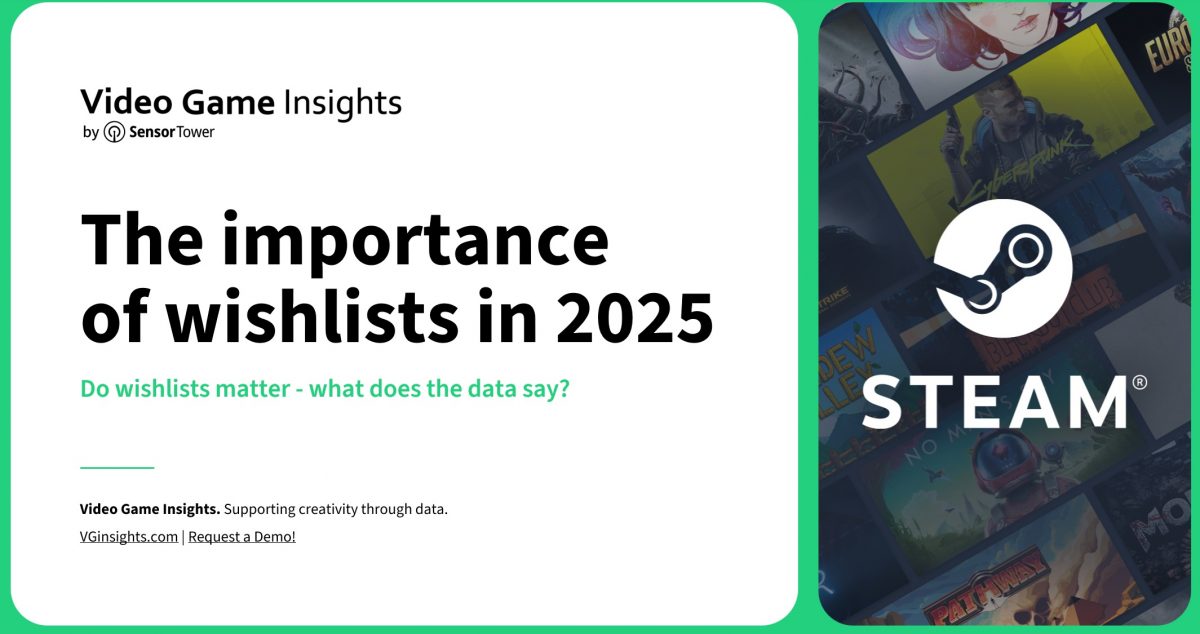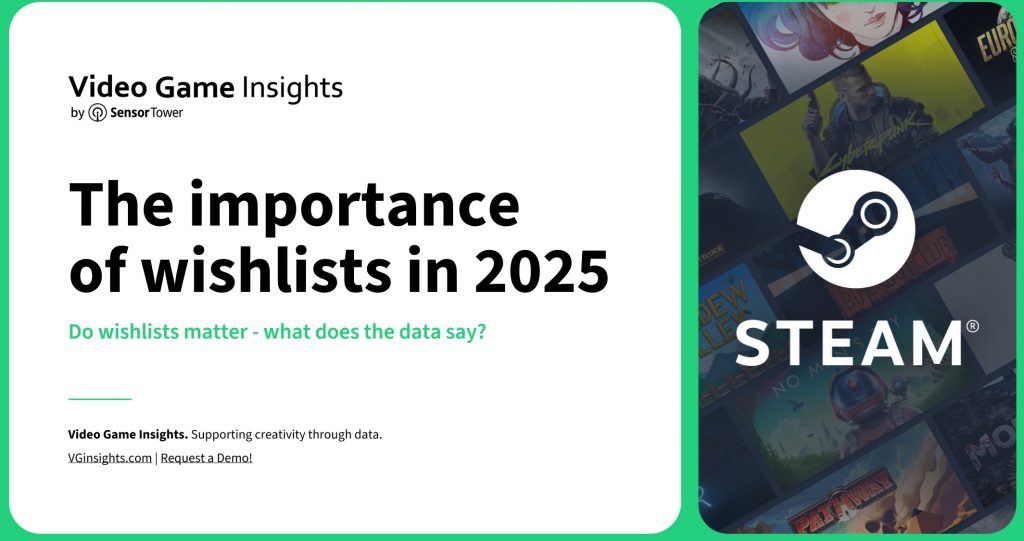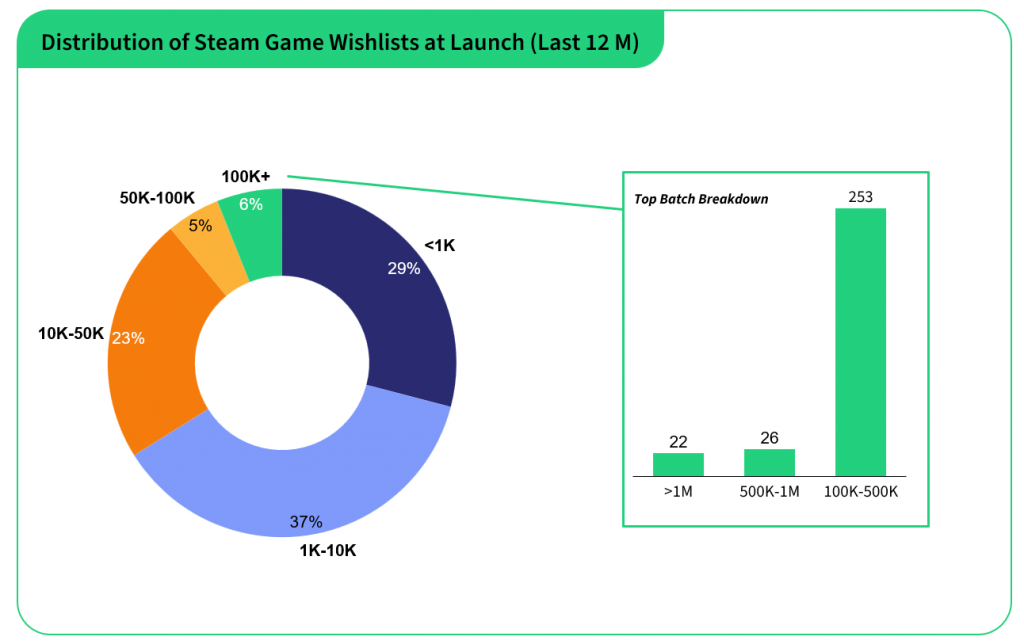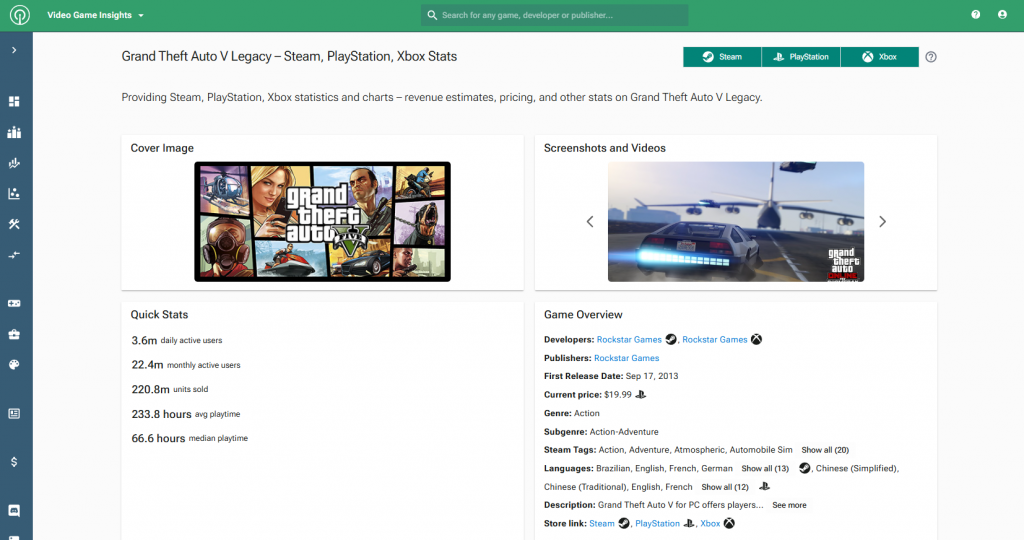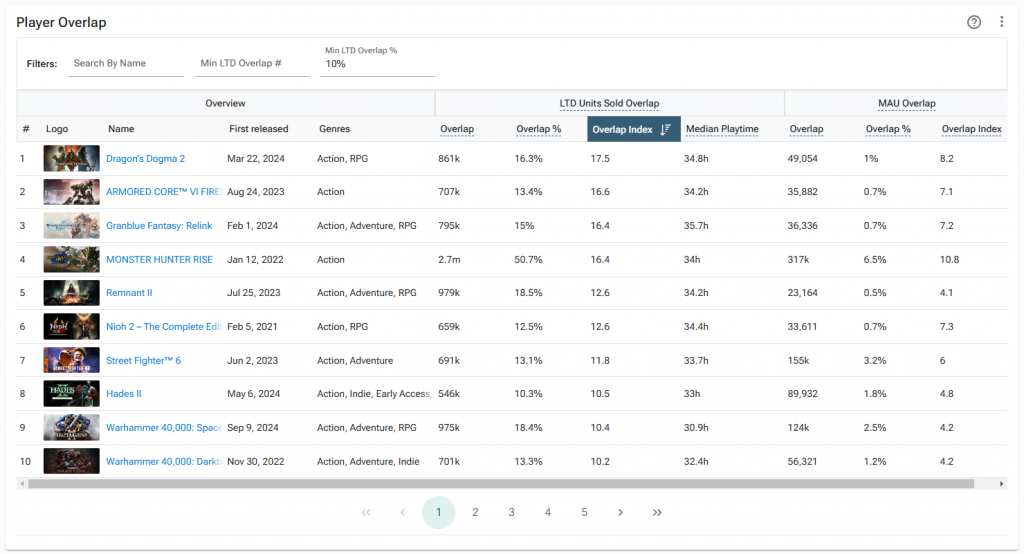The VGI platform has changed slightly – you might have noticed our new top bar and nav bar colours. Yes, it looks more like Sensor Tower!
Our UI/UX goal for 2026 more broadly will be “looks like Sensor Tower, feels like VGI”.
New filters – IP and Franchise
We have launched a set of new filters on the platform – Game Franchise and Game IP. Users are now able to narrow down their search to specific IPs and franchises to make analysis more useful.
This has been put together by the SensorTower Game IQ team who’s also responsible for the SensorTower App taxonomy – guaranteeing high quality, high coverage and matching methodologies across VGI and Sensor Tower.
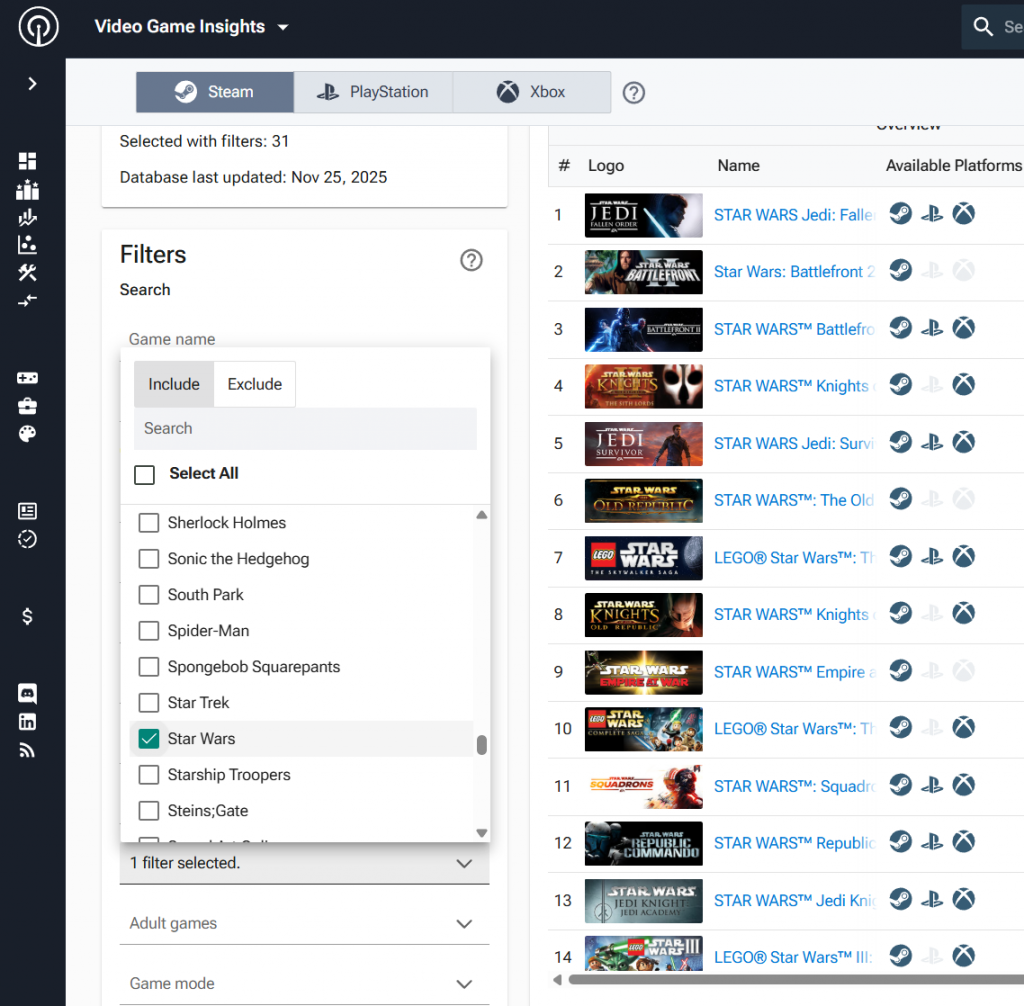
Demographic breakdown – age and gender breakdown for games
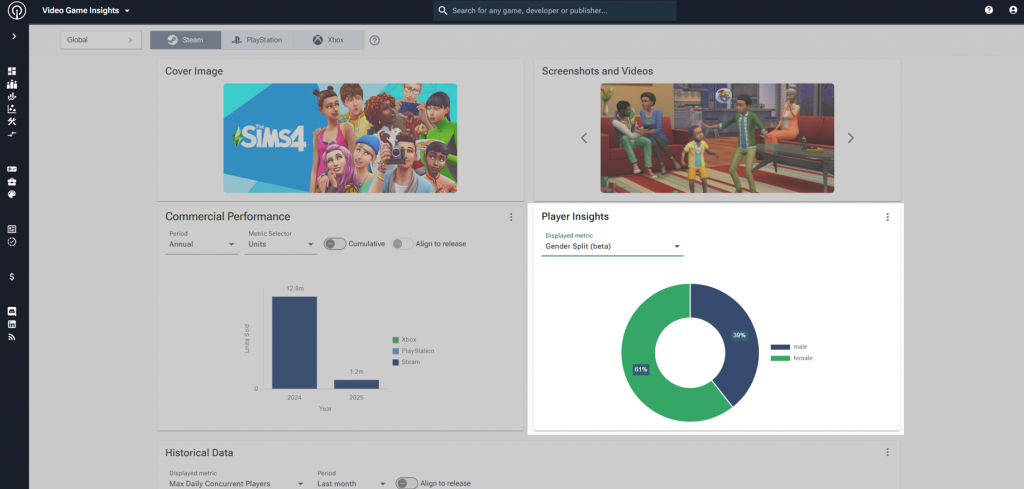
We have launched demographic data estimates for 450 larger games, giving you an idea of exactly who the audience is that’s playing these games. This covers age and gender and we’ll be expanding this coverage across more games and more metrics as we go.
UI Changes
The new darker top bar and side bar are another step closer to matching our visuals to the broader Sensor Tower portfolio. There’s a lot more to come in 2026 where we will start using Sensor Tower’s much more powerful charts and other features.
Upcoming change to Steam estimations
We will be launching a major update in December that impacts how we estimate Steam units, revenue and engagement metrics.
We will be moving to a new estimation model which will impact thousands of games, including the historical data. This will significantly improve our accuracy across these metrics.
Note – this does impact many games and will also override historical data.
More details will be announced soon. We will make sure to give users ample time to prepare for the change before it happens.


